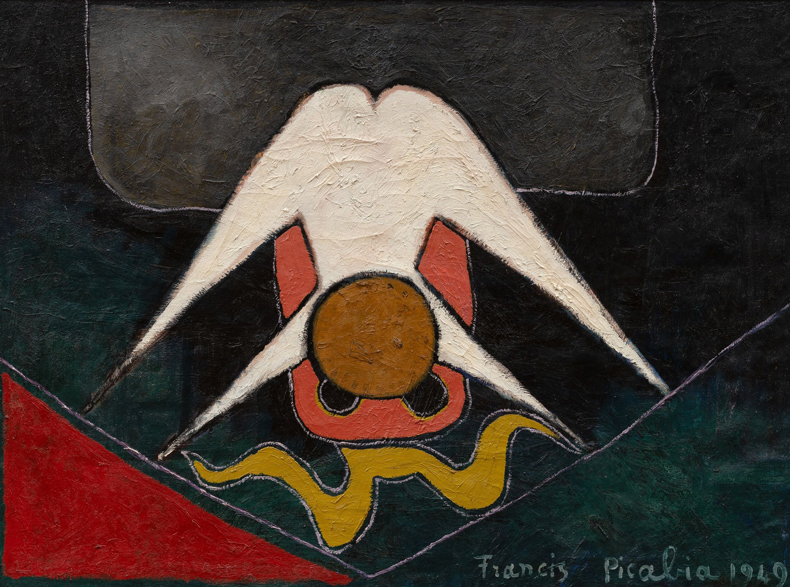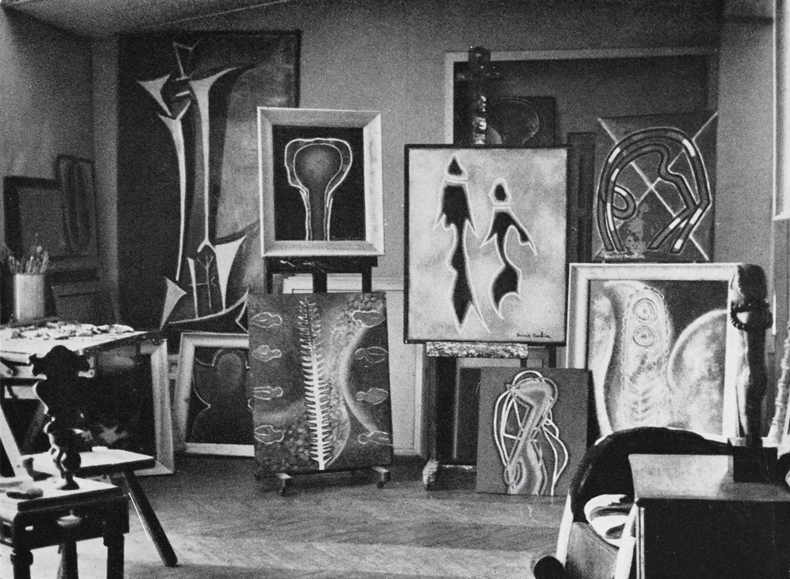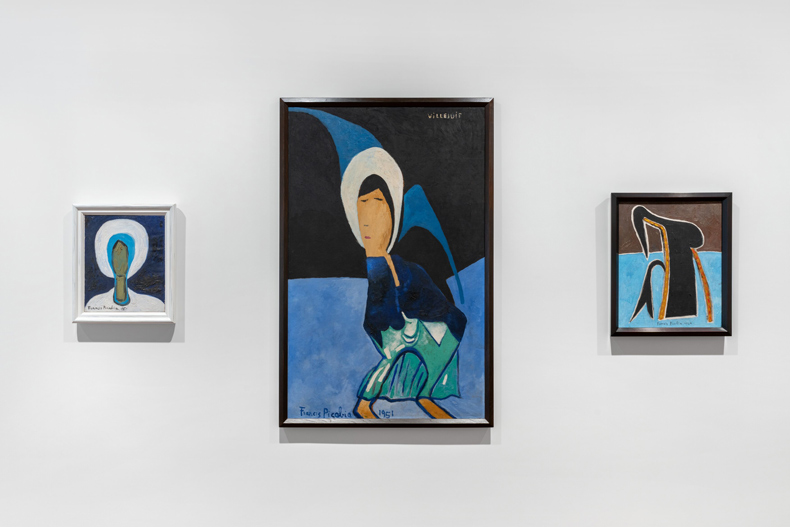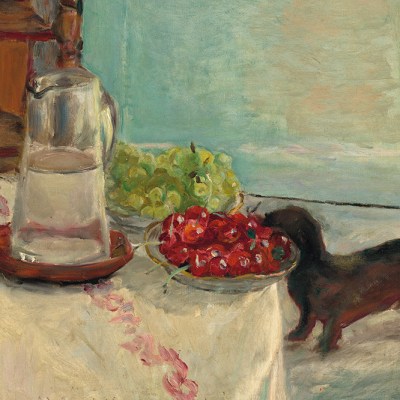In November 1945, Francis Picabia declared that art was ‘at a dead point’. Surrealism, he told an interviewer, was past its heyday, abstraction empty, figurative painting obsolete. In the face of such stagnation, the artist announced, his own future practice would reflect his ‘perpetual personal quest’ for renewal; his search to grasp, in paint, ‘the unattainable, the real.’ From this point, he warned, his work would be less explicit in form, but deeper in meaning. No longer would his paintings explore the external world; instead, they would seek to convey inner states of being, giving voice to pure, personal expression.
Picabia’s reputation, at this moment, was poised precariously. He had returned to Paris from the south of France after a brief spell in prison on charges of collaboration: never substantiated, but which left him a figure of suspicion. Financial travails were compounded by a devastating burglary; mortality was on his mind. His wartime output – a controversial series of kitsch oil paintings depicting nude women, based on photographs he found in erotic magazines – had attracted derision. At the same time, he was sought out by a younger generation of artists who admired his puckish spirit and energy for innovation, and looked to him for guidance as they developed a visual language that might grapple with the post-war order.
Colloque (Colloquium) (1949), Francis Picabia. Archives Comité Picabia, Paris. Photo: Nicolas Brasseur.

Picabia’s career was one of restless self-reinvention. He was a leading figure in several vanguard movements, yet bewildered critics with his propensity to abandon successful modes for incongruous alternatives. He had shot to early prominence in Paris with acclaimed exhibitions of Impressionist landscapes, influenced by Camille Pissarro and Alfred Sisley, but changed tack dramatically around 1910, his style inflected first by cubism, then by the Dadaist machines of Marcel Duchamp, with whom he shared an irreverence for artistic conventions and a fascination with futuristic technology. In 1920 — perhaps fuelled by negative reactions to his mechanomorphic paintings, which led one critic to declare he is ‘no longer a painter, but an industrial designer for Peugeot’ — Picabia announced his secession from Dada: ‘One must be a nomad,’ he told an interviewer, ‘and traverse ideas as one would travel through countries and cities.’ Thereafter, Picabia experimented with an incongruous range of forms and subjects: moody portraits of nude women, grotesque monsters inspired by Catalan Romanesque frescoes he had seen in Barcelona, and transparences — ethereal superimpositions of see-through and opaque images, merging abstraction with motifs from classical art.
Yet the mysterious, even numinous paintings Picabia made from 1945 until his death eight years later – 45 of which are shown in this major survey at Hauser and Wirth’s Paris gallery – signalled a definitive turn away from his wartime preoccupations, and one of the most marked shifts of his chameleon career. These works are predominantly abstract: dark, brooding canvases washed with rich colour, marked with curved lines and enigmatic symbols hinting at nature, creation, primordial life. Picabia drew on motifs from cave paintings, Greco-Roman archaeological finds, Catalan frescoes: birds, genital forms, horned beasts, eggs, masks, trees, moons. Many take their titles from Nietzsche – First Seek Your Orpheus; The Denier of Chance. Upstairs, the curators present a series of Picabia’s Points paintings: works that he described to a friend as ‘a giant step in painting’. From a distance, these look like monochrome canvases, pocked by small, neat coloured dots. Up close, however, these surfaces are far from minimalist: symbols appear in the brushstrokes, the textures turbulent and complex.
Picabia’s studio in Paris as published in Entretiens sur l’Art abstrait (1965) by Raymond Bayer (Éditions Pierre Cailler)

In many cases, Picabia painted directly over earlier works, which can sometimes be seen in faint outline beneath thick daubs and squeezes of paint. This was less an act of renunciation than a skin-shedding gesture of renewal. Seen in the context of post-war Europe, where many artists turned to abstraction to express the horror of the past and the impending threat of the atomic bomb, Picabia’s formal leap feels both universal and personal: here are new forms emerging from the old, drawing on a well of human history and knowledge. If, as he suggested, art was at a dead end in November 1945, Picabia’s late works propose a way forward: they are sombre but full of vitality, palimpsests which suggest future possibility even as they acknowledge the past.
Picabia’s career is still being reassessed. Those wartime nudes, long treated as an embarrassing aberration, have been read as postmodern precursors to Pop art in their artful recycling of found images; this exhibition and its beautiful accompanying catalogue make the compelling case that these late works – which have rarely been shown – mark an art-historical beginning, rather than an ending to one solitary career. Lucio Fontana made his first Buchi work – slashing a hole through a canvas – in 1949, the same year Picabia began his Points paintings: Robert Rauschenberg’s white paintings followed two years later. In his introduction to the 1949 show in which the Points works made their debut, the painter and critic Michel Seuphor declared that Picabia had revived the dynamism of his Dada period: these works exhibited ‘the same anti-painting painting that is genuine creation’. He was right: these profound, bewitching, fresh works bear all life within them.
Installation view of ‘Francis Picabia. ‘Éternel recommencement/Eternal Beginning,‘ at Hauser & Wirth Paris, 2025. Courtesy Hauser & Wirth. Photo: Nicolas Brasseur

‘Francis Picabia: Éternel récommencement/Eternal Beginning’ is at Hauser & Wirth, Paris, until 12 March, and in New York from 1 May–1 August.



